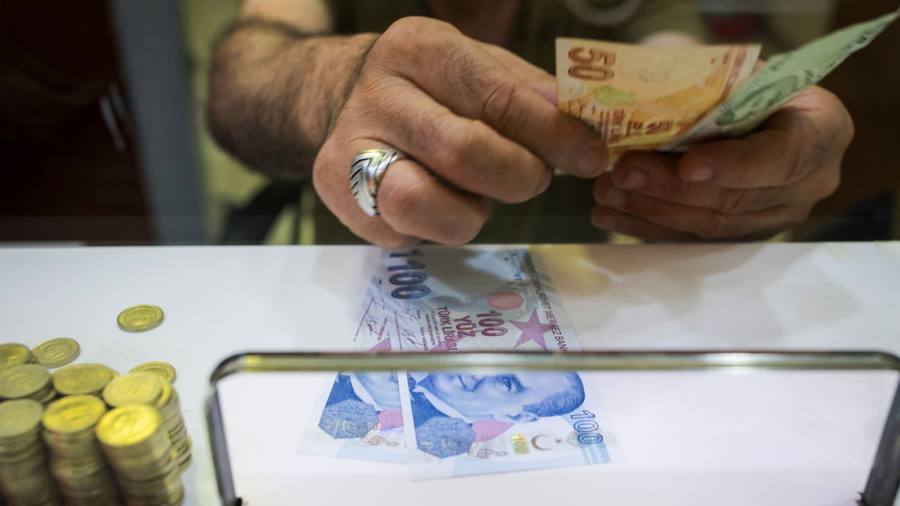Turkey’s lira tumbled on Wednesday by the most since late 2021 as President Recep Tayyip Erdoğan’s new economic team began to loosen the shackles that had slowed its fall in recent months.
The currency dropped 6 per cent in London trading on Wednesday to a new record low of 23 against the dollar, leaving it down almost 9 per cent since the appointment of Mehmet Şimşek as finance minister at the weekend. The lira has not ended a day with such a big fall since December 2021, Refinitiv data show.
Şimşek, a former deputy prime minister who is well regarded by foreign investors, has promised to restore “rational” economic policies in Turkey after years of rate cuts and unconventional measures to prop up the currency.
“This exchange rate . . . was heavily suppressed by alternative financial [measures] before the election,” said Enver Erkan, chief economist at Istanbul-based brokerage Dinamik Yatırım Menkul Değerler. “The new period will bring a more liberal approach in this regard and will create a situation that will enable the lira to get closer to its real value.”
The fall this week highlights how investors are increasingly expecting a shift towards more orthodox measures in the aftermath of Erdoğan’s election victory last month. Erdoğan is expected by some analysts to also name a new central bank chief with a more orthodox economic approach.
The pace of the lira’s depreciation has been rapid: Goldman Sachs said at the weekend that it expected the lira to fall to 23 against the dollar in the next three months, a forecast that in fact came to fruition in a matter of days.
One big bank in currency trading told clients on Wednesday that Turkish state banks appeared to not be intervening in the market, according to a person familiar with the matter. State bank lira purchases have been seen as a key tool in propping up the currency in recent years.
Currency analysts broadly say the lira is overvalued compared with Turkey’s economic situation, even after falling more than 60 per cent against the dollar over the past two years. Erdoğan had insisted on huge rate cuts, with the main policy rate falling from 19 per cent in March 2021 to 8.5 per cent today despite intense inflation. This has knocked “real”, or inflation-adjusted, interest rates deep into negative territory.
“With such pressure on the lira, we think it is a question of when rather than if the currency weakens significantly, with the probability of a larger one-off adjustment having increased,” Goldman said in a note to clients, predicting a fall to 28 against the dollar in the next year.
The central bank has burnt through about $24bn in foreign currency reserves this year alone, in part in an attempt to boost the lira. The reserves have also been used, economists say, to finance Turkey’s big current account deficit, which itself has been made worse by a lira that many exporters have said is too strong to be competitive.
Murat Gülkan, chief executive of OMG Capital Advisors in Istanbul, said “things are beginning to make sense” with the currency, given inflation was “running high”.
Şimşek, a former senior bond strategist at Merrill Lynch in London, pledged on Sunday that Turkey would switch to a policy of “transparency, consistency, predictability and compliance with international norms” with the goal of bringing inflation from almost 40 per cent at present down to single digits.
While the lira has fallen sharply, other indicators have pointed to relief among investors about the proposed policy shift. Turkey’s dollar bonds have rallied in price, while the cost to protect against a default has eased markedly.
Read the full article here



